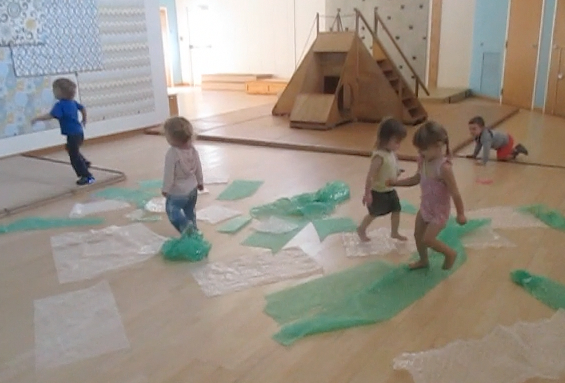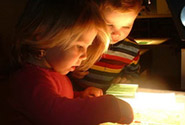May
24
Videatives Views #209 Children Add Structure to an Open Space
 In this video clip, we find an interesting variation on a previous video clip in our library titled, “How Spaces Support Social Play.” In that video we provided our analysis of the affordances of a space to support rules of running to and running back between well defined features of the room: a cozy nook of cushions on one end and a wall of mirrors on the other. Children “read” a space for such features and then use them to construct their rules of play.
In this video clip, we find an interesting variation on a previous video clip in our library titled, “How Spaces Support Social Play.” In that video we provided our analysis of the affordances of a space to support rules of running to and running back between well defined features of the room: a cozy nook of cushions on one end and a wall of mirrors on the other. Children “read” a space for such features and then use them to construct their rules of play.
In this practice video we provide a set of questions that will help you develop a method for studying your own children’s spaces. We see seven children in a large open space. The teacher has placed transparent and translucent paper here and there in segments. We begin with a few comments on how the environment helps to generate rules of play.
We note (time code 00:09) that the boy stands on the gym mat and then jumps off with both feet. That is how one learns to jump in a standing position from a higher to a lower elevation. But the boy takes this action-motif and continues to jump from paper segment to paper segment in an invented game. We say invented game because the action is unnecessary but fun, like vigorously splashing your boots in water puddles as you walk after a rain. The invented rules represent the high level thinking of play. Don’t forget to think about the thinking, the decisions of children as seen in their action motifs that are repeated by one and followed by another.
Here are some questions that will orient you to the relation between space and play and thinking.
The boy jumps from the mat and from paper to paper, using the paper as targets. The girl does the same. Is she influenced by the boy’s actions or by the features of the environment? Do we see an example of emergent group play at this point? Where in the video (use time codes) do you see that the paper on the floor influences the pattern of the play? Does the importance of the paper diminish?
Think about the back and forth of who is the leader and who is the follower. What does a child do to create the perception that “now I am the leader?”
Where does it happen that a rule of play comes to an end and the children pause to invent a new rule?
Does it seem significant to you that the running game requires a starting point, the mat? What is the difference in the children’s minds between moving to the mirrored end from the mat and moving to the mat from the mirror end? Is one more symbolic and the other more utilitarian? If so, does this asymmetry in the meaning of these two directions break down?
Can you spot other action-motifs that look like a decision to move in a way that is unnecessary but makes a statement that “this is a rule” and give the children a way to say in their actions, “I am a member of the group?”
Why do the children put their hands up on the mirror when they arrive? Why not just stand in front of the mirror?
At some point the running rules are adopted by all of the children in the room. When does that happen? Can you speculate on why the game shifts from a few children to all of the children?
We hope that these questions provide you with strategies for analyzing a video of children at play. Children are incredibility competent about reading a space and each other to invent games that evolve from simple to complex. Adding something conspicuously uncommon to the environment catalyzes such thinking.


